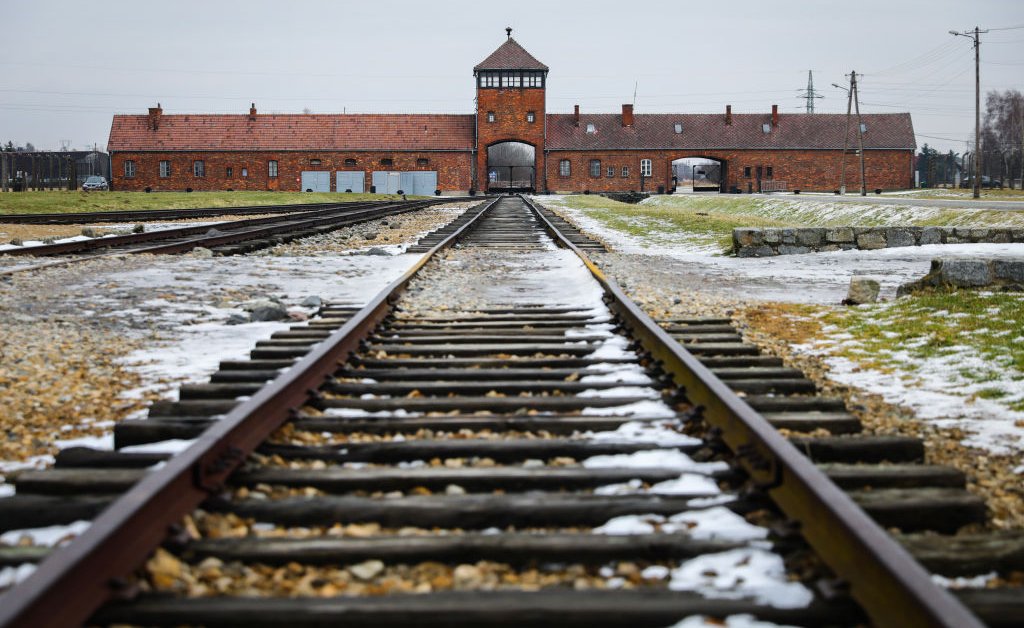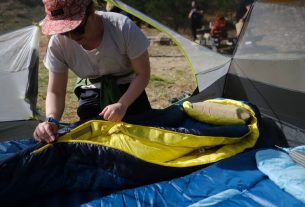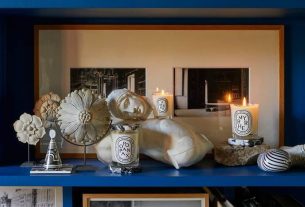In April 1944, two Jewish prisoners, one of them a teenager, would attempt what until then had been all but impossible: to break out of Auschwitz and successfully make their way to freedom. Their motive: to warn the world of the mass slaughter underway in a death camp whose existence was, at that time, barely known. Incredibly, they got out of Auschwitz. Then, over 11 days, travelling only at night, and with no map or compass, Walter Rosenberg, aged 19, and Fred Wetzler, aged 25, crossed the mountains, rivers and forests of Nazi-occupied Poland until they had reached their home country of Slovakia. There they eventually made contact with the remnant Jewish community and its leadership, the Ústredňa Židov or ÚŽ, the Jewish council. Over two weeks, hiding in the basement of a home for the elderly in the provincial town of Žilina, they poured out what they knew, in what would become the first full account of Auschwitz ever written, one whose impact would be felt for generations.
The conversation—part debrief, part interrogation—would last several days. As soon as he heard the men give the outline of their story, the Jewish community official understood that this was bigger than him: the ÚŽ’s leadership needed to hear this. He telephoned Bratislava to speak to Oskar Krasňanský, a chemical engineer by profession who was one of the council’s most senior figures. Steiner urged him to come right away. Jews were not allowed to travel by train, but Krasňanský wangled a permit and was in Žilina later that same day. The head of the Jewish council, the fifty-year-old lawyer and writer Oskar Neumann, joined them twenty-four hours later.
For the officials, the first task was to establish that these two men were who they said they were. That was simple enough: Krasňanský had brought with him the records kept by the council of every transport that had left Slovakia, for what was then destination unknown. There was a card for every deportee, including their name and photograph. So when Fred and Walter gave the date and point of origin of the transports that had taken them away, the records backed them up.
More than that, Fred and Walter were also able to name several of the others who had been jammed into the cattle trucks with them, along with specific individuals who had arrived in Auschwitz on subsequent transports. Each time, the names and the dates tallied. And each time, the escapees were able to confirm the fate of the people on those lists: with next to no exceptions, they were naming the dead.
Krasňanský found these two young men credible right away. They were clearly in a terrible state. Their feet were misshapen and they were completely exhausted; he could see that they were undernourished, that they had eaten almost no food for weeks. He summoned a doctor and between them they decided that the men should stay here, in this basement room, to recover their strength. A couple of beds were brought down.
Yet, for all their physical weakness, Krasňanský was struck by the depth and sharpness of each man’s memory. It was a thing of wonder. The engineer was determined to get their testimony on record and to ensure that it would be unimpeachable.
With that in mind, he decided to interview the two separately, getting each story down in detail and from the beginning, so that the evidence of one could not be said to have contaminated or influenced the other. In sessions lasting hours, Krasňanský asked questions, listened to the answers and wrote detailed shorthand notes. Whatever emotional reaction he had to what he was hearing—which was, after all, confirmation that his community had been methodically slaughtered—he hardly showed it. He kept on asking questions and scribbling down the answers.
Walter alternated between speaking very fast, as if in a torrent, and very slowly, deliberately, as if searching for the exact word. Before the formal, separate interviews, Fred saw how Walter strained to be strictly factual, like a witness in a courtroom, only for the emotional force of the events he was describing repeatedly to prove too much. The younger man could not help himself: he seemed to be reliving those events in the telling, every fibre of his tissue and every pore of his skin back in Auschwitz. After an hour, Walter was utterly drained. And yet he had barely got started.
For the separate interview, Krasňanský ushered him into a room which he locked. It was less a protection against interruption than a security measure, given that the Jewish old people’s home of Žilina was now harbouring two fugitives from the SS, with a Gestapo warrant out for their arrest. (That was another reason to keep them in this building, day and night, for as long as two weeks: if they went out on the street looking like this, they would be noticed. People might start to talk.) Either way, Walter began the conversation by asking for a piece of paper and a pen.
He began to draw a map, the distances as close to scale as he could make them. First, he sketched the inner layout of the main camp, Auschwitz I. Then, and this was more complicated, he drew Birkenau or Auschwitz II, with its two sections and multiple sub-sections, A, B, C and so on. He showed where the behemoths of German industry—IG Farben, Siemens, Krupp and the others—had their factories, powered by slave labour. He showed where, at the far end of Birkenau, stood the machinery of mass murder: the four crematoria, each one combining a gas chamber and set of ovens.
For forty-eight hours, whether separately or together, Walter and Fred explained it all: the transports, the selection, during which those chosen to work were marched off while those chosen to die were ferried towards the gas. The tattoos for the living, the ovens for the dead. The two men rattled off the dates and estimated numbers of every batch of Jews that had arrived since the late spring of 1942 right up until the week they had made their escape. They spoke in particular detail about the fate of their fellow Slovak Jews.
Krasňanský, often joined by Neumann, listened to it all, absorbing every word. Neumann was a lawyer by training and it often felt like a cross-examination as he pressed and pushed Walter and Fred on every aspect of their evidence. Neumann might name an old school- friend whom he knew to have been on a specific transport, say in September 1943, asking if the pair knew the fate of that group. They would give their answer, knowing it would be checked against what they had already said about that same transport nine or ten hours earlier. The officials of the Jewish council were looking for inconsistencies, either within the testimony of Fred and Walter or between them. But they found none.
The tenor of the questioning irritated Walter. He could see that these men were interested in what they were hearing, that they were deeply engaged in it, but they were hardly brimming with human sympathy. They were officials, bureaucrats, in the business of seeking precision rather than showing compassion. Of course,Walter affected not to care, but it needled him all the same.
It even annoyed him that these officials were reliant on the word of two young men who had risked bullets and starvation to make the trek across the border. Why, he wondered, had they not despatched one of their number to Auschwitz to see first hand the fate visited upon their fellow Slovak Jews who had been shipped out of the country? That seventy-five-odd mile journey was hard and perilous, to be sure; no one knew that better than him and Fred Wetzler. But they had just proved it was not impossible, and they had been two young men with no map, no money and their names on an international arrest warrant. Surely, Walter thought, Neumann and the others could have sent a single undercover operative with the right papers and the required resources. The Jewish council had heard rumours about what ‘resettlement’ really entailed: why had they not done more to discover the truth?
Walter and Fred kept talking nonetheless, answering every question that was put to them. Finally, Oskar Krasňanský took away the notes he had assembled, the words directly from the mouths of the two men, and, at rapid speed, with a Mrs Steiner at the typewriter, merged the pair’s accounts, distilling them into a single text. Written in Slovak, it ran to thirty-two, single-spaced pages. It included a series of professional drawings, setting out the ground plans for Auschwitz I and II and the basic layout of the crematoria buildings, rendered by an architect but based on Walter’s rough sketches and the testimony he and Fred had provided. The opening page was a foreword written by Krasňanský, though his name did not appear. It explained that the report had been written by two young Slovak Jews “whose names will not be disclosed . . . in the interest of their own safety.” It briefly set out the separate deportation history of both men, before declaring that the document would not tell of the men’s entire experience but would include “only what the one or both together underwent, heard or experienced at first hand. No individual impressions or judgements are recorded and nothing passed on from hear-say.”
Then came the crucial line, confirmation that Fred and Walter had passed the rigorous, forty-eight-hour oral examination to which they had been submitted: “The declarations tally with all the trustworthy yet fragmentary reports hitherto received and the dates given with regard to transports to various camps agree with the official records. These statements can therefore be considered entirely credible.”
The report was written in a shifting first person plural: its first paragraphs referred to ‘our’ deportation from Sered’ to Auschwitz; later it spoke of ‘our’ convoy from Nováky to Majdanek, without spelling out that the first experience belonged to one escapee, the second to the other. It then described the life of an Auschwitz prisoner and the topography of the camps: the initial journey by cattle truck, the shaving of heads and bodies, the tattooing of numbers, the colour-coded triangles that marked the different categories of prisoner, the barracks, the inner and outer chain of watchtowers, the roll call, the sign saying Arbeit Macht Frei, the slave factories, the hanging of attempted escapees, the starvation, the casual beatings, the twice-weekly selections at the infirmary, all of it.
‘Arbeit Macht Frei’ sign at the former Nazi concentration camp Auschwitz in Oswiecim, Poland on 27 January 2015.
Jakub Porzycki-NurPhoto
Perhaps because the job of distillation was done by an engineer overseen by a lawyer, rather than by a journalist, the document was bald and spare, free of rhetorical fire. It gave the floor to facts rather than passion. And it did not declare its most shocking news at the top. On the contrary, the word ‘gas’ did not appear until page seven, and its core revelation—that all but a small number of Jewish deportees to Auschwitz were murdered on arrival—did not come till the following page. Even then, that horrific fact was delivered with no oratory or even emphasis; it was all but slipped out as an aside. It came after a list of transports that arrived in the spring of 1942, the last made up of 400 Jewish families from France:
This whole convoy consisted of about 1,600 individuals of whom approximately 200 girls and 400 men were admitted to the camp, while the remaining 1,000 persons (women, old people, children as well as men) were sent without further procedure from the railroad siding directly to the Birch forest, and there gassed and burned. From this moment on all Jewish convoys were dealt with in the same manner. Approximately 10% of the men and 5% of the women were allotted to the camps and the remaining members were immediately gassed.
From there, the report went on to list the transports, each one denoted, and committed to memory, by the numbers that were allocated to the handful selected from each for work:
38,400–39,200: 800 naturalized French Jews, the remainder of the convoy was—as previously described—gassed.
47,000–47,500: 500 Jews from Holland, the majority German emigrants. The rest of the convoy, about 2,500 persons, gassed.
48,300–48,620: 320 Jews from Slovakia. About 70 girls were transferred to the women’s camp, the remainder, some 650 people, gassed.
It carried on in that vein, listing every transport or group of transports, until the prisoner numbers of those selected for work reached 174,000. Sometimes the entry would be terse and factual, offering no more than a place of origin and an estimate of the number of dead. But sometimes the report would offer additional information, even the names of individuals, usually fellow Slovak Jews, who had been selected for work from a particular transport. There were references to Esther Kahan from Bratislava, Miklós Engel from Žilina and Chaim Katz from Snina, ‘now employed in the “mortuary” (his wife and 6 children were gassed)’. An entry for a transport of 2,000 French political prisoners, communists and others reported that among them was the younger brother of the former French prime minister Léon Blum: he was ‘atrociously tortured, then gassed and burned’.
Not until page twelve did the report describe the mechanics of murder. Alongside a drawing presented as a ‘rough ground plan’, there was a description of the four crematoria then in operation at Birkenau in stark, strictly factual sentences:
A huge chimney rises from the furnace room around which are grouped nine furnaces, each having four openings. Each opening can take three normal corpses at once and after an hour and a half the bodies are completely burned. This corresponds to a daily capacity of about 2,000 bodies.
Referring to the diagram, the report took care not to leave out what, to Walter, was the heart of the matter: the centrality of deception in the Nazi method:
The unfortunate victims are brought into hall (b) where they are told to undress. To complete the fiction that they are going to bathe, each person receives a towel and a small piece of soap issued by two men clad in white coats.
All the key details were there: from the Zyklon B and how it was dropped through vents in the ceiling to the work of the Sonderkommando in removing the bodies. It detailed the typhus wave of August 1942 and the fate of the Czech family camp in March 1944. It explained that the ‘internal administration’ of Birkenau was carried out by a group of ‘specially selected prisoners’, with its own hierarchy of elders and block registrars, and identified the constituent sections that made up Birkenau II, from Quarantine Camp A to the Gypsy Camp E. It named the commandant as Rudolf Höss. Concise as it was, it sought to be comprehensive.
| It concluded with a list, billed as a ‘Careful estimate of the number of Jews gassed in Birkenau between April 1942 and (according to countries of origin)’: | April 1944 |
| Poland (shipped by trucks) approximately | 300,000 |
| Poland (shipped by trains) approximately | 600,000 |
| Holland approximately | 100,000 |
| Greece approximately | 45,000 |
| France approximately | 150,000 |
| Belgium approximately | 60,000 |
| Germany approximately | 60,000 |
| Yugoslavia, Italy, Norway approximately | 50,000 |
| Lithuania approximately | 50,000 |
| Bohemia, Moravia, Austria approximately | 30,000 |
| Slovakia approximately | 30,000 |
| Various camps of foreign Jews in Poland … approximately | 300,000 |
TOTAL approximately 1,765,000
Krasňanský showed the text to the two men whose words he had taken down verbatim and whose testimonies he had amalgamated. He wanted their approval to release it immediately. Walter read it quickly and could see its flaws. The change in first person perspective, from Fred to him, could confuse. And, given that the document was not intended solely for Slovak consumption, there was perhaps a disproportionate volume of detail on the fate of the Jews of Slovakia, down to the inclusion of those individual names.
But surely the biggest defect was contained in the words that were not there. The final text made no mention of the imminent catastrophe about which Fred and Walter had been so desperate to warn. It did not speak of the urgent threat to the Jews of Hungary. They had certainly discussed it. In the presence of Neumann, president of the Jewish council, the pair had described the construction work they had seen in the camp and relayed the excited SS talk of the imminent arrival of ‘Hungarian salami’. And yet in this document there was not a word about it.
What was more, when the final text mentioned the planned extension of the camp, the area known as ‘Mexico’ where Walter and Fred had hidden for three days and nights, there was no hint that this section, BIII in Nazi officialese, was apparently intended to contain a new influx of Hungarian prisoners. On the contrary, the report insisted that ‘The purpose of this extensive planning is not known to us.’
Why would a document written by two Jews who had escaped for the purpose of alerting Hungary’s Jews not even mention the specific threat to that community? Walter confronted Krasňanský: there had to be an explicit warning in the text. But Krasňanský was equally adamant: the credibility of the report depended on it being a record of murders that had already taken place. No prophecies, no forecasts, just the facts. Krasňanský was sticking to the promise he had spelled out in the foreword: this document would only be believed if it confined itself to what had happened, eliminating any intimation of what was to come. The talk of ‘Hungarian salami’ had apparently fallen foul of that standard, classified as speculation and hearsay and therefore deemed unfit for inclusion. Still, Krasňanský was at pains to reassure the escapees that what they had revealed about preparations for the mass murder of Hungarian Jewry would be passed on to the relevant authorities.
Walter had a decision to make. Of course he wanted the warning to Hungary’s Jews to be loud and clear. Of course he would have preferred that the report be explicit on that point and much else. But that would have meant a delay. There simply was no time for a rewrite, for correcting errors or retyping pages, not when every day, every hour, counted. Better to get a flawed report out today than a perfect one tomorrow. Walter and Fred signed their approval.
But if Walter expected Krasňanský and Neumann to dash out of the door that instant, stuffing the report into the satchel of a messenger who would rush to Budapest as fast as a locomotive could take him, he was to be disappointed. The next day, Friday 28 April, the home for the elderly became the venue for a secret meeting of the Slovak Jewish leadership, with Neumann in the chair. They were in resistance mode, so the rules of illegal work applied: no names were to be used.
The two escapees were subjected to a final round of questioning from this group, called to defend the report like doctoral students summoned to defend a dissertation. One man, a lawyer, seemed incredulous that ‘civilised Germany’ was, in effect, executing people without due legal process. He returned to the point several times. Walter’s patience reached its limit. He sprang out of his chair and began to shout.
Back there, they are flinging people into the fire at this moment, he said. You need to do something. Immediately!
Fred tried to restrain him, but it was no good. Walter started pointing at individuals around the table, including the lawyer, accusing them of just standing there, like pillars of salt.
You, you, you—you’ll all finish up in the gas unless something is done.
Fred tried again to calm his young friend and eventually Walter’s shoulders slumped and he sank back into his chair.
After that, Krasňanský readied the document for dissemination. He got to work on a translation of the text into a language that would be comprehensible to the greatest number of people: it certainly would not go very far in Slovak. Krasňanský decided it would be most effective if it were written in German.
Meanwhile, there was an equally practical matter to attend to. April was drawing to a close; the workers’ festival of May Day was looming. That date tended to make the Slovak authorities anxious—they saw 1 May as a potential focus for anti-fascist activity—and so their habit had been to search the few remaining Jewish buildings, on the lookout for ‘Judeo-Bolshevik agitators’. Fred and Walter could hide no longer in the pensioners’ home in Žilina.
The Slovak Jewish leaders had arranged a safe house for them in the mountains, some fifty-five miles east of Žilina, in the town of Liptovský Svätý Mikuláš. Walter and Fred were given money to live on and, far more precious, false papers certifying them as pure Aryans of at least three generations standing. That status would give them complete freedom of movement around Slovakia. If they were on a train or in a restaurant that was raided by the police, there would be nothing to fear: these bogus documents were flawless.
Naturally, they were not in the name of Alfréd Wetzler or Walter Rosenberg.Those men were Jews and the subjects of an international arrest warrant. Instead, the papers verified the identity of two new men. Fred was to be ‘Jozef Lánik’, while Walter Rosenberg would be reborn as ‘Rudolf Vrba’. For Fred, the move would prove temporary: he would revert back to his original name as soon as he could. But for his friend, this was a change for good.
Rudolf Vrba was not an entirely new creation. There had been an influential Czech Catholic priest of that name who had died five years earlier, having built a reputation as an energetic antisemite: he had proposed a set of measures to secure the exclusion of Jews from Bohemian life. But the new Rudi, as he was to become, was not bothered by that association, if he was aware of it at all. (Nor, apparently, was he much fazed by sharing his new first name with the commandant of Auschwitz.) All that mattered was to be free of what, to him, was the Germanic taint of ‘Rosenberg’. He wanted to sever every connection with that supposedly ‘civilised’ nation.
Walter Rosenberg was no more. From now on, and for the rest of his days, he would be Rudolf Vrba, with a name that was impeccably Czech, carrying no hint of German or, for that matter, Jew.
The two men, reborn as Jozef and Rudi, headed for the mountains. Meanwhile, the work of their lives, the Auschwitz Report, was about to embark on a journey of its own.
The Vrba-Wetzler report would eventually reach the desks of Franklin D. Roosevelt, Winston Churchill and Pope Pius XII. Through a series of extraordinary diplomatic moves, it would lead to the saving of 200,000 Jewish lives.
This is an adapted extract from The Escape Artist: The Man Who Broke Out of Auschwitz to Warn the World, by Jonathan Freedland, published by HarperCollins
More Must-Reads From TIME



